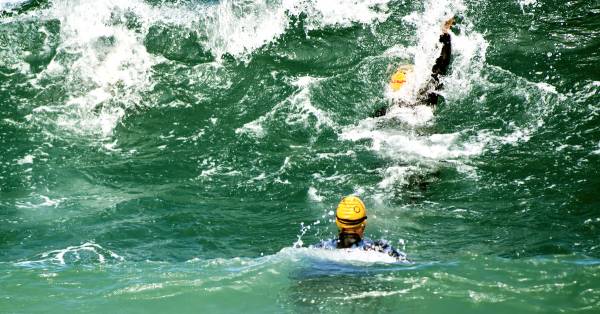The old-school way of triathlon training is lots and lots of long, slow distance (LSD). But you aren’t doing yourself any favors with LSD if you want to be a better (read: faster) triathlete. I will agree that all newbies and those coming back after an extended break need to do to the necessary base training, and not exceed the 70% effort that LSD requires. But once you have established that base, you will never get better than that 70% if you continue exclusively with LSD training. That includes athletes at the Ironman level.
All my athletes train with decreased training time and increased work capacity. I have had many athletes go to world championships at all three distances using this method. In other words, it is quality that matters more than quantity. Garbage mileage will not produce an improved athlete. Today I will share the science I use for my programming.
To Go Faster, You Must Train Faster
Aerobic training is at low power and lasts in excess of several minutes. This would be your 1-3 kilometer runs. Aerobic training benefits cardiovascular function and decreases body fat. It allows us to engage in low-power, extended efforts efficiently.
However, athletes that spend the bulk of their training time engaged in aerobic efforts will see a decrease in muscle mass, strength, speed, and power. Surprisingly, excess aerobic activity has a pronounced tendency to decrease anaerobic capacity. It is also at this low-power work effort that most repetitive injuries occur.
Anaerobic training is at high power and lasts less than several minutes. Think sprints of 100, 200, 400, and 800 meters. Anaerobic activity also benefits cardiovascular function and decreases body fat. Studies show that anaerobic exercise is superior to aerobic exercise for fat loss. Additionally, anaerobic exercise can dramatically improve power, speed, strength, and muscle mass.
This type of conditioning allows us to exert tremendous forces over brief time intervals and will not affect aerobic capacity. Properly structured anaerobic activity can be used to develop a very high level of aerobic fitness without the muscle-wasting seen in high-volume aerobic exercise. Why spend time lifting weights in the gym to blow it all doing your aerobic training workouts at the 70% LSD?
Work, Rest, Improve
The best method to use anaerobic efforts to develop aerobic conditioning is interval training. The bulk of metabolic training should be done this way. Interval training mixes bouts of hard work and rest in timed intervals. These can be for a set period of time or distance, and don’t need to be tightly structured or formal.
This type of training targets the upper limits of our work capacity; the leftover 30% that LSD training ignores. Interval work is done at 75-100% of maximum effort. It’s in this area that we become fitter, faster, and stronger. As a bonus, it also works our mental game, as it is often not easy or fun to do. As I explain to my athletes, when you work that upper limit (85-95%) you will find race day easier. In longer distance races, we generally don’t go “all out,” so when we are used to working at our upper limits and we dial it back for race day, then we are in a magical place that exceeds our goals. The end result is that we are racing easier but still going faster.
How to Manage Intensity
There are several methods I use to ensure my athletes get some balance and time for the body to adapt to the changes. One is to program a deload week every month, in which I dial back the workouts a bit and give an extra day or two off.
Another method is adding in some time trial work. These are longer efforts, but meant to be above 70%. Time trials are useful to track the increase in speed and ease within a training cycle. An example would be a 10k time trial effort for half and full ironman athletes. Each time we test the 10k TT, it determines the next block of training. If the athlete gets faster, then I can increase the training load and distance sets. If the athlete is slower, then I decrease the training load. Additionally, it helps boost the athlete mentally to continue to work hard when they see the time drop and the effort become easier. The time trial effort distance varies depending on what mesocycle we are working in.

Endurance tests come in the last six weeks or so before the race taper starts. All long efforts are done at race pace. This is the pace of the three disciplines that we wish to race in. Usually by this time, it’s a new pace that was modified during training after finding how much faster we became. Not only does it show how hard and successful the training was, but it allows for peace of mind to be able to tackle the long-distance race.
Try It For Yourself
If you are not sure if you are ready to give up old-school LSD training, I challenge you to try my method for 2-3 months. It requires a full commitment during that time with no cheating.
Start my program at week 1, and follow along until at least week 8. Then reach out and tell me about your success. Have fun!
If you’re going to do intervals, do them right:






